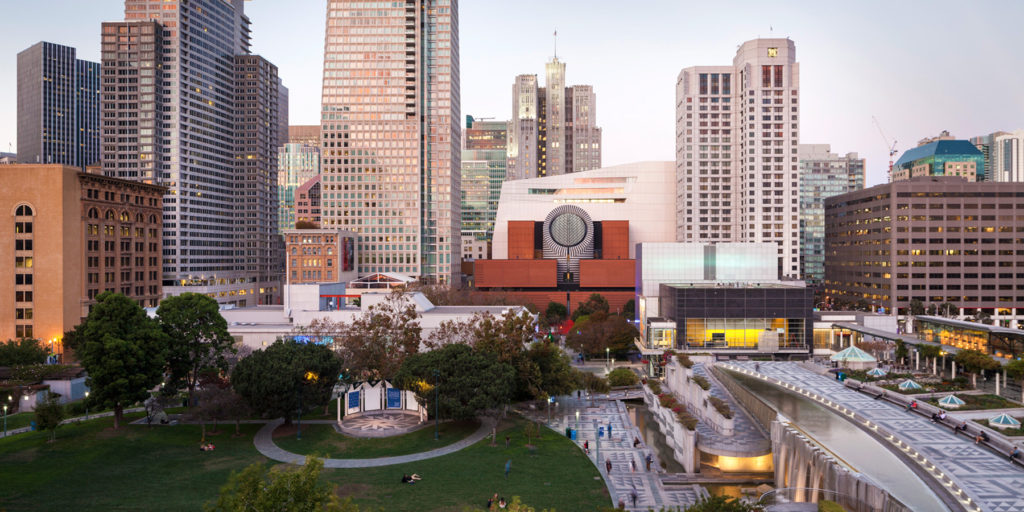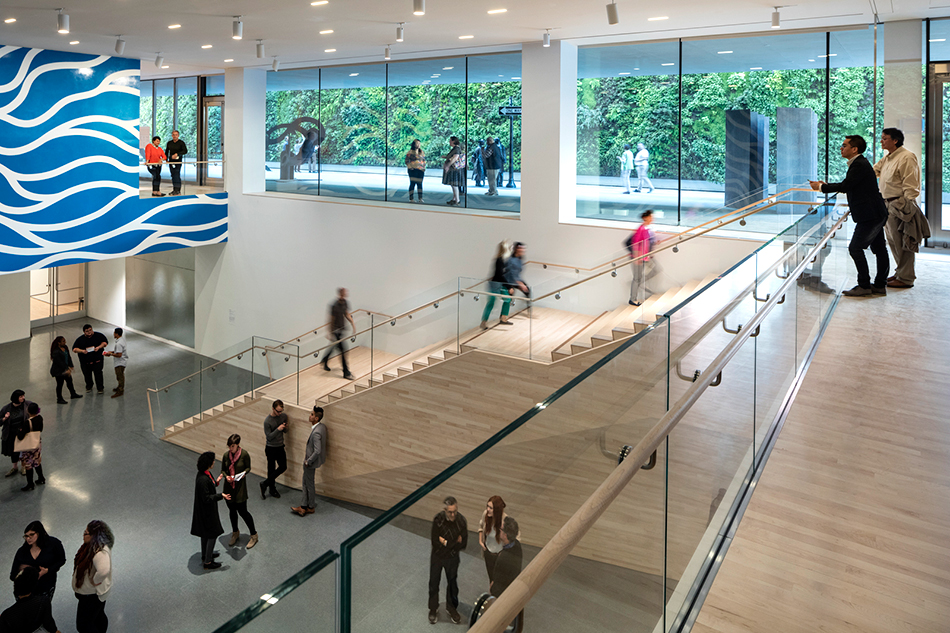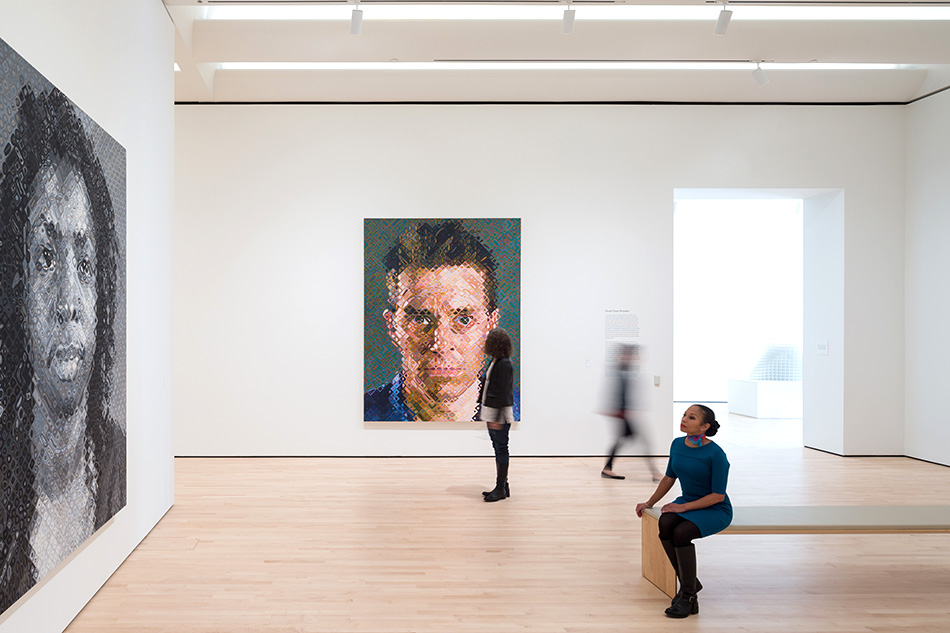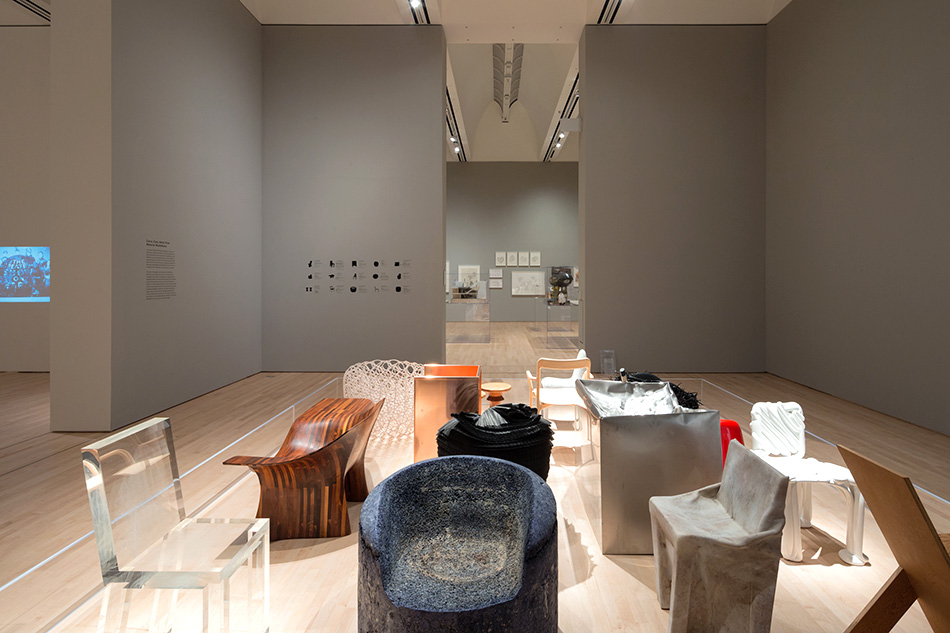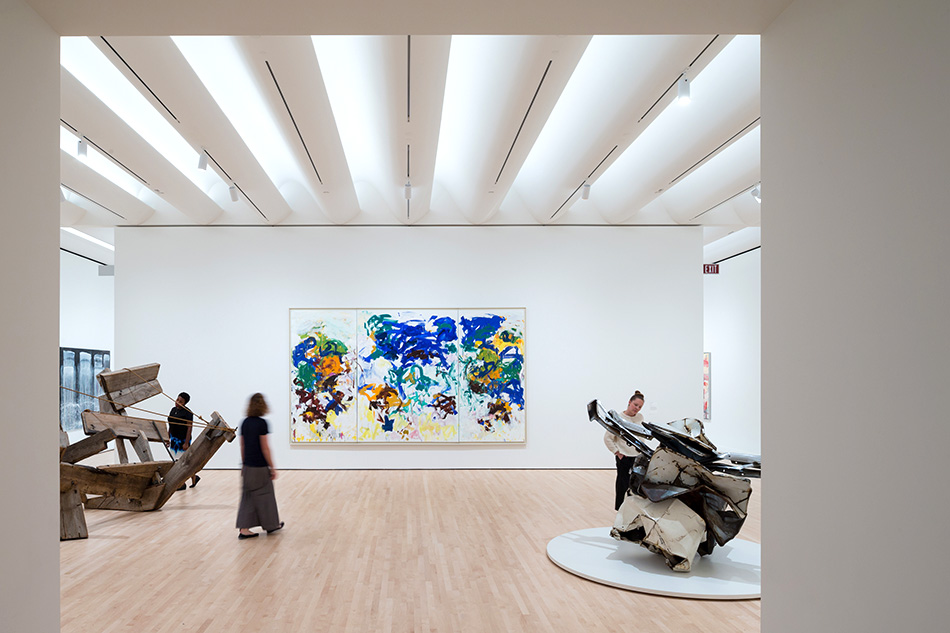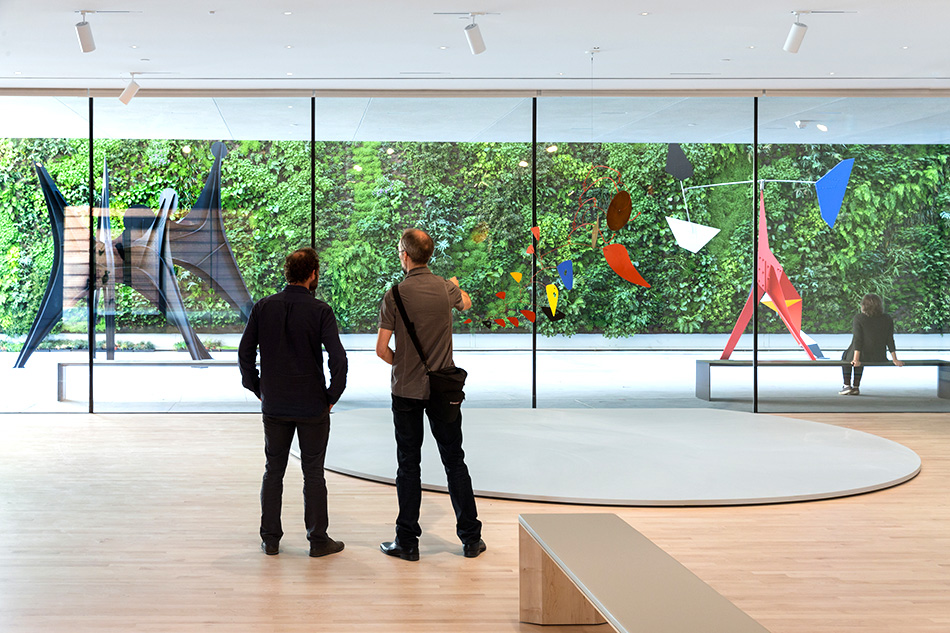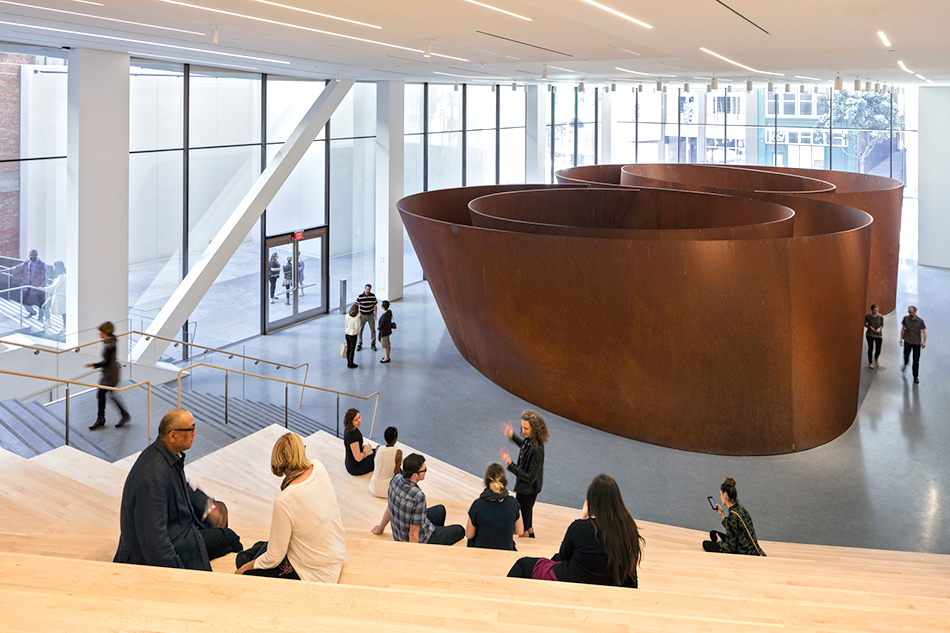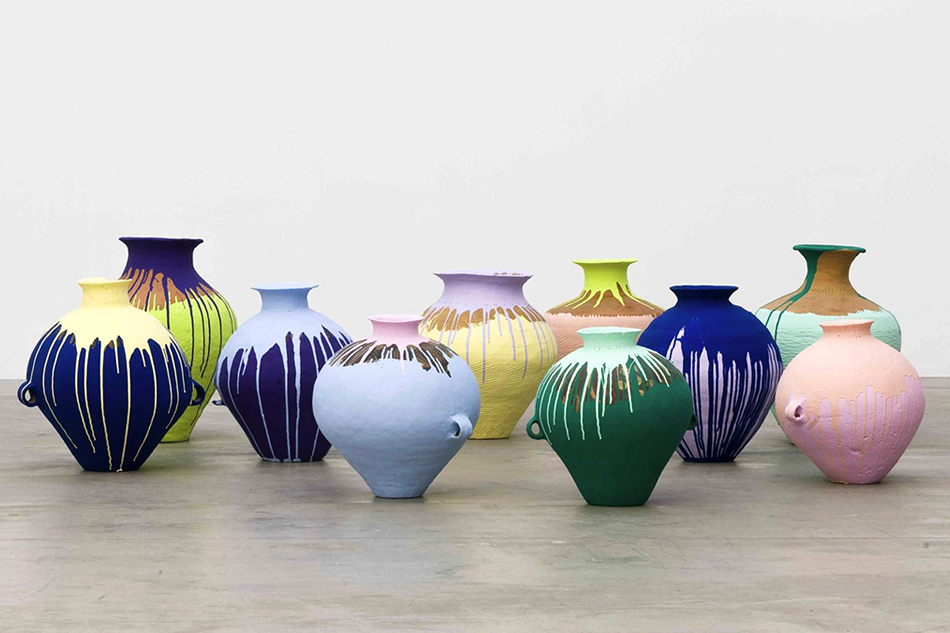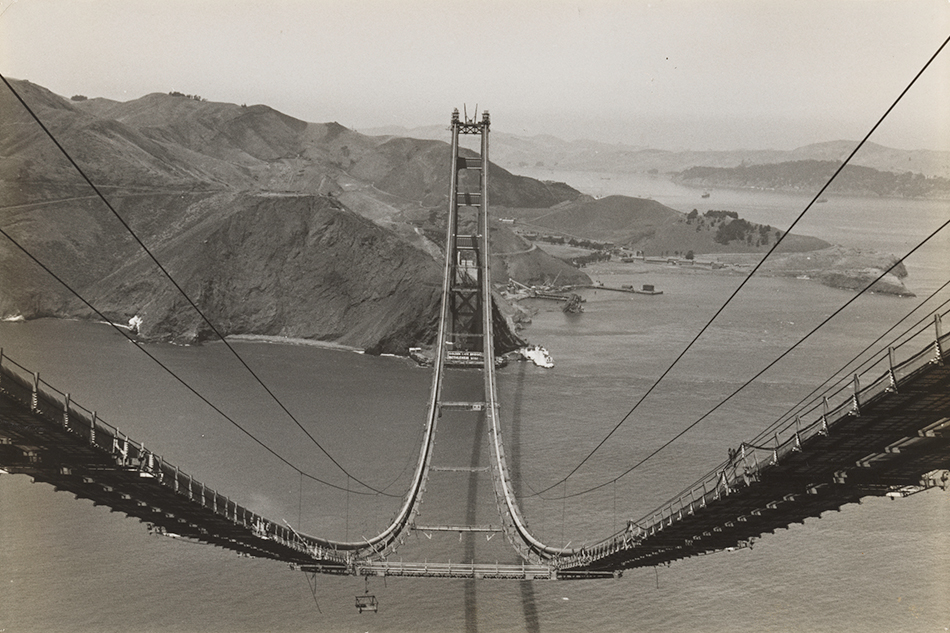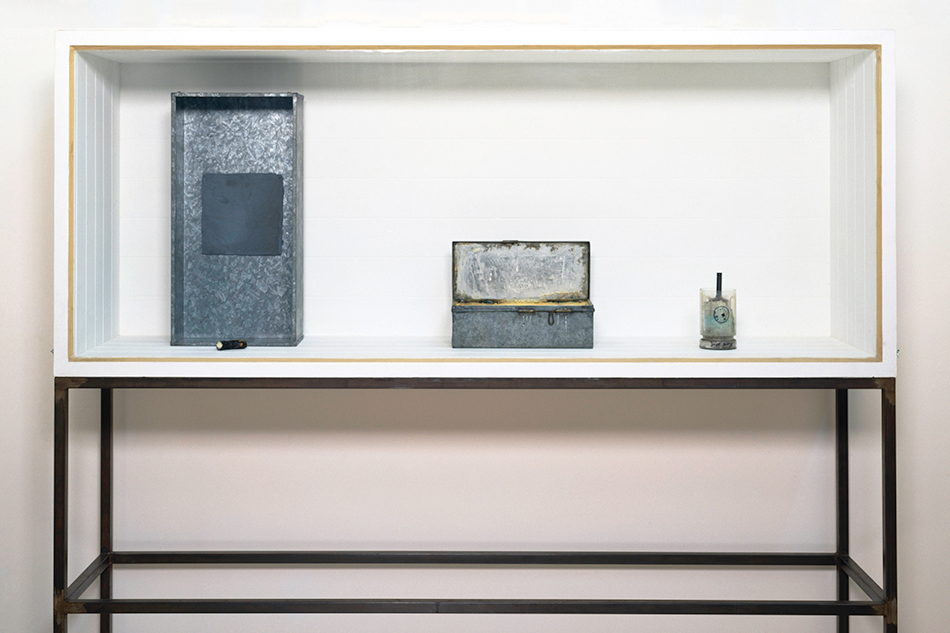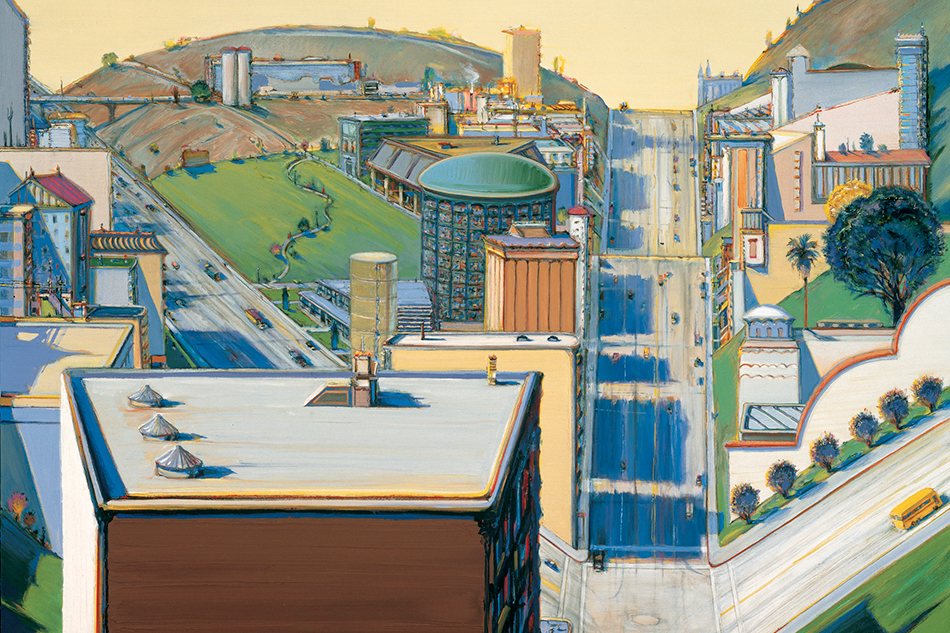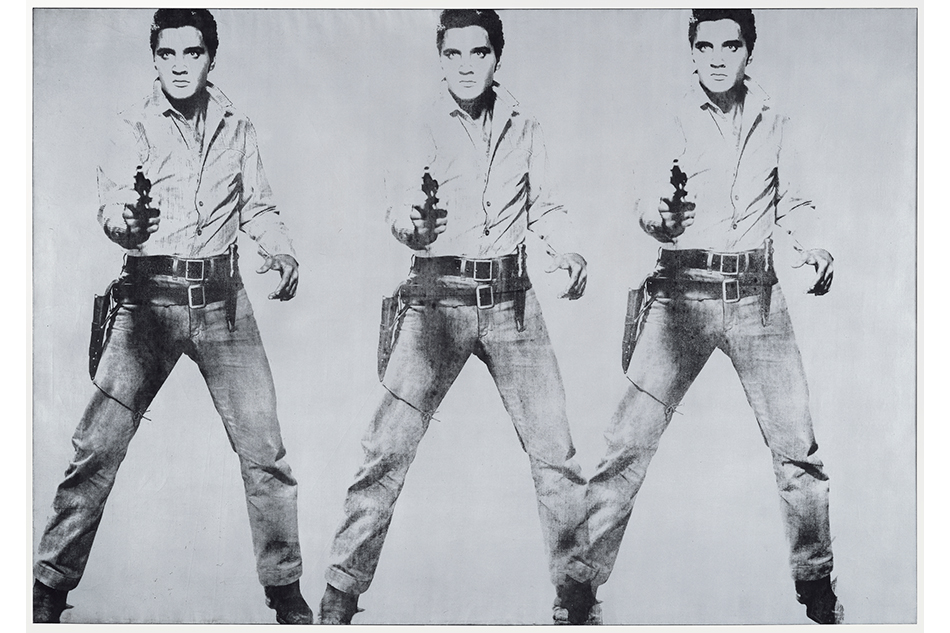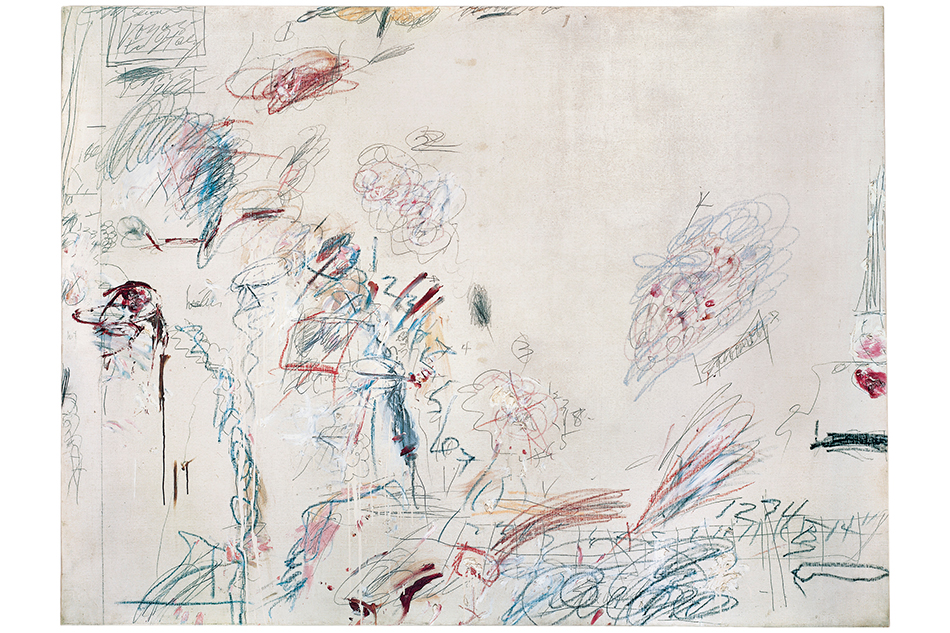
May 9, 2016A 1963 Alexander Calder mobile hangs from the oculus in the reimagined lobby of the San Francisco Museum of Modern Art, whose original postmodern 1995 Mario Botta building underwent a major renovation and expansion by the Norwegian firm Snøhetta that debuts this week (photo © Iwan Baan, courtesy SFMOMA). Top: A view of SFMOMA from Yerba Buena Gardens shows the brick Botta building with the white fiberglass Snøhetta structure rising behind it (photo © Henrik Kam, courtesy SFMOMA).
The addition to the San Francisco Museum of Modern Art that opens on May 14 is one of the biggest museum expansions in this era of elaborate redos. A $305 million project on a high-profile, densely urban site, it has doubled the museum’s overall size, to 460,000 square feet, and tripled the gallery space.
The expansion is the handiwork of the acclaimed Norwegian architecture firm Snøhetta, which essentially sliced off the back wall of Swiss architect Mario Botta’s postmodern 1995 building and attached a new, very different one of the same size.
The striking new structure’s facade is clad in 700 uniquely shaped, white fiberglass panels. The undulating surface, whose appearance changes with the light, is meant to evoke the waves of San Francisco Bay and the city’s famous fog as it rolls in. The floors are maple, matching Botta’s choice for his building, which remains fully in use as part of the overhauled museum.
The Botta building has had its share of detractors over the years, but Craig Dykers, the Snøhetta cofounder who spearheaded the SFMOMA addition, clearly wasn’t one of them. The new building pays tribute to Botta’s stepped structure with six terraces of its own, the star of which is a seventh-floor balcony with a stunning city view. “They are visually part of the same family, and the massing of the buildings is similar,” Dykers explains. (Architecture nerds should be on the lookout for a little peephole he created that provides a view of hidden dead space where the two buildings meet — they are on separate foundations, as is required in a seismically active city like San Francisco.)
Visitors can enter the museum either through the original soaring atrium, flooded with light pouring in through Botta’s signature column-supported oculus, or through the addition, where a huge Richard Serra sculpture, Sequence (2006), sits in front of a series of maple-faced steps and amphitheater-style seating that lead up to the collections. Inside, Dykers has created quirkily appealing staircases between the floors that are meant to evoke the twisting, steeply ascending streets of San Francisco. “He calls them ‘sneaky stairs,’ ” says Gary Garrels, SFMOMA’s chief curator. “Craig doesn’t like escalators.”

The works from the Fisher family collection on display include Roy Lichtenstein’s Live Ammo (Tzing!), 1962. Photo © Estate of Roy Lichtenstein
Garrels has been tasked by SFMOMA director Neal Benezra with reinstalling the collection, which means picking from some 33,000 works, including ones by Diane Arbus, Cindy Sherman, Jasper Johns, Ed Ruscha and Joseph Beuys, among other headliners of modern and contemporary art. (One of the museum’s greatest strengths has always been its photography collection.) “As with Renzo Piano and the Whitney,” says Garrels, referring to New York’s year-old home for the Whitney Museum of American Art, “we wanted big, flexible spaces we could divide up any way we want.” To that end, only two long interior walls inside the galleries on each floor of Snøhetta’s addition are structural; the rest can be moved as desired.
With the current reinstallation, the curator has had a lot on his plate, including one of the most welcome tasks in the museum world: integrating what has come to be called the Fisher Collection. The Fisher family has been extraordinarily generous to the museum over the past few years. In 2011, it announced a gift of 195 masterworks, plus a whopping 1,100 pieces that will be on long-term loan. Together, these could have easily composed the entire holdings of a separate museum.
When the museum reopens, three whole floors of the new building will be devoted to showing some 260 works of Fisher material. Ellsworth Kelly, a favorite of the philanthropic family, gets the most space: four big galleries displaying some works that have never been on view outside the Fishers’ private residences. “We worked really closely together and tweaked it, before he died,” Garrels says, referring to Kelly, who passed away last year at the age of 92. “Everything has his blessing.”
Alexander Calder, Sol LeWitt, Agnes Martin and Gerhard Richter, are among other artists well represented in the Fisher trove. The Calder gallery is a particular showstopper, filled with light and leading to a terrace.
When describing his family’s role in the process that has resulted in the new SFMOMA, Bob Fisher — a son of Doris and the late Don Fisher, co-founders of the Gap clothing empire — is as unpretentious and straight-talking as any museum mega-patron out there.
“It’s an act of generosity, but there’s an element of selfishness too,” Fisher says, providing a surprising take on the family art legacy. “I didn’t want to spend my life and career trying to do badly what Neal and his team know how to do so well.” In other words, there will be no private museum for the Fishers. “The museum was a much bigger canvas than what we could have done on our own,” he adds.

Snøhetta intended the undulating surface of its addition to evoke the waves of San Francisco Bay and the city’s famous fog as it rolls in. Photo © Henrik Kam, courtesy SFMOMA
But Fisher has contributed much more than artworks to SFMOMA’s transformation. He teamed up with fellow board member Charles Schwab, founder of the eponymous brokerage house, to raise the large sum of money that building the addition required.
Schwab used to go on art-buying trips with Don and Doris Fisher, sometimes with Garrels in tow as an adviser, he remembers with fondness a trip to Japan years ago to pick up the collection of a bank that had overextended itself on art. He and the younger Fisher have an easy rapport — it’s a high-end buddy act. Asked what was next for the board, Schwab laughs and says, “I hope we’ll have a pause here! We stripped everybody of their excess cash and excess art.”
Despite the present levity, the fund-raising was done with extreme earnestness. “We knew we had to right-size the endowment, and we didn’t want to fall into the trap of having the money for the bricks and mortar but not to run the place,” Fisher says, referring to the fact that they raised $245 million beyond what was required to cover the building costs, to add to the existing $100 million endowment. “We had a business plan as early as 2009, and we updated it twice.”
That plan was complicated by the timing. “We began this work at the height of the recession,” says Benezra, who, as the museum’s director, had to balance the interests of staff, patrons, donors and the community during the three long years of construction — quite a task when there is no museum to visit. “But when you have a great idea it’s not hard to solicit gifts. People believe in what we’re doing.”
Fisher and Schwab had a big-picture approach that went beyond building a place to show off their own donations. (Schwab had pledged pieces by Johns, Brice Marden and Francis Bacon.) “Now that the museum has really escalated in the size of its inventory, we have leverage to make trades for loans,” says Fisher, thinking of exhibitions far in the future.
For now, the whole team is bracing for an effect that newly enlarged museums always have: an uptick in the number of visitors. In 2012, about 632,500 came to SFMOMA, and one million are expected annually going forward. As Benezra puts it, “We’ve built something really exciting, and people are going to come to see it.”
